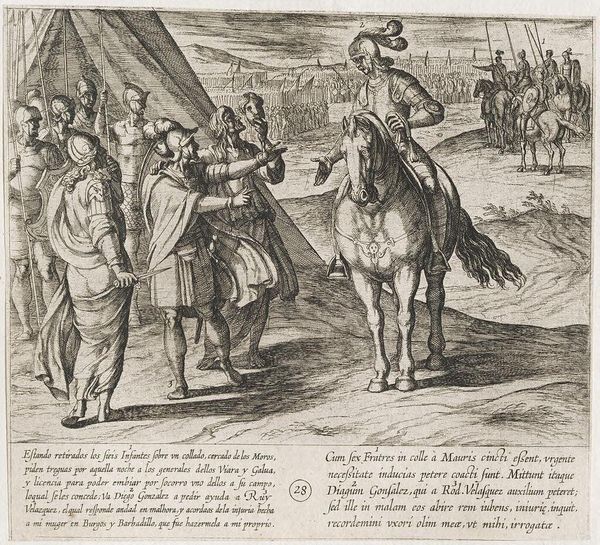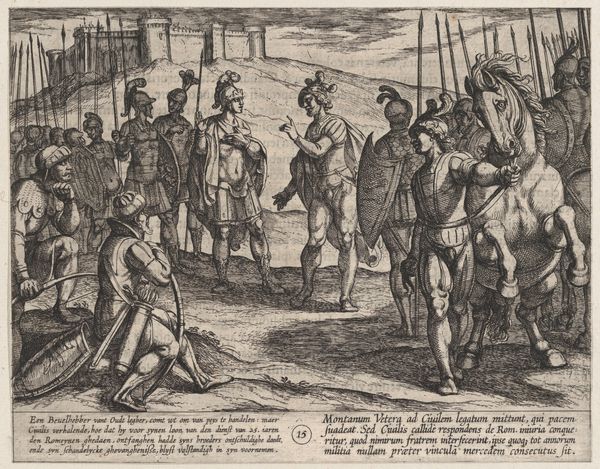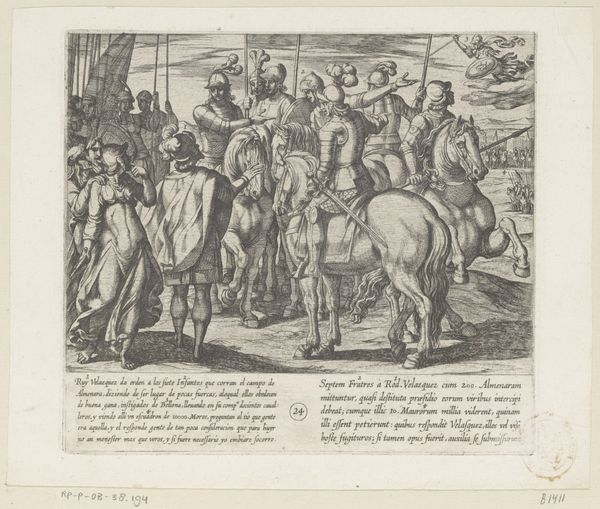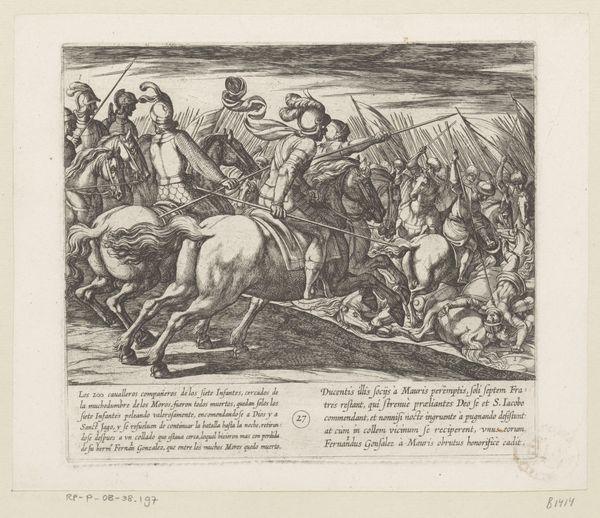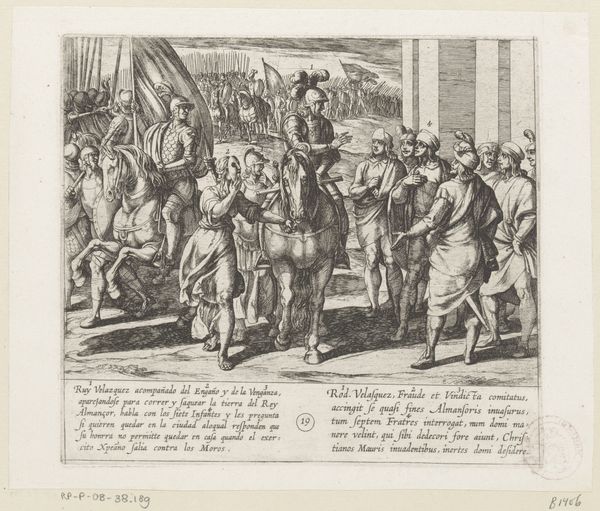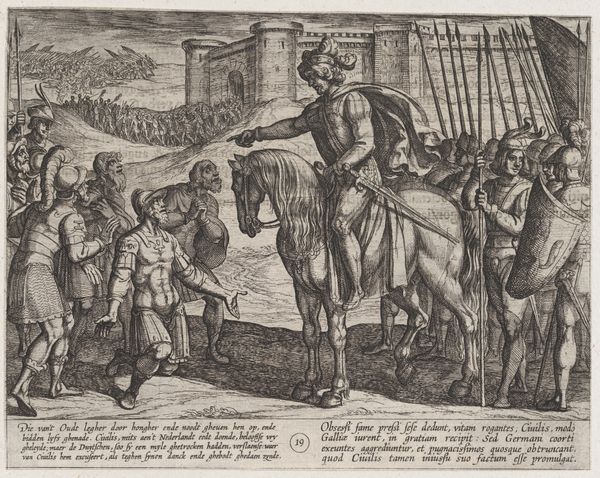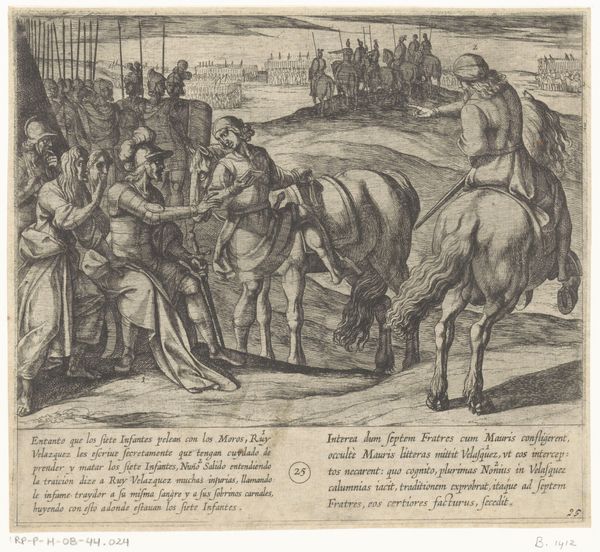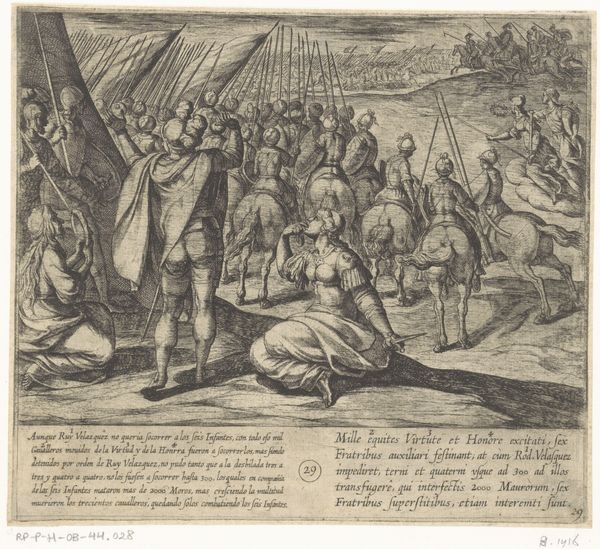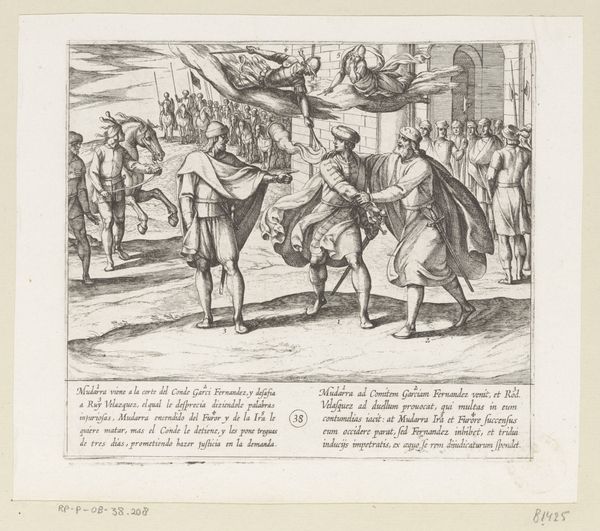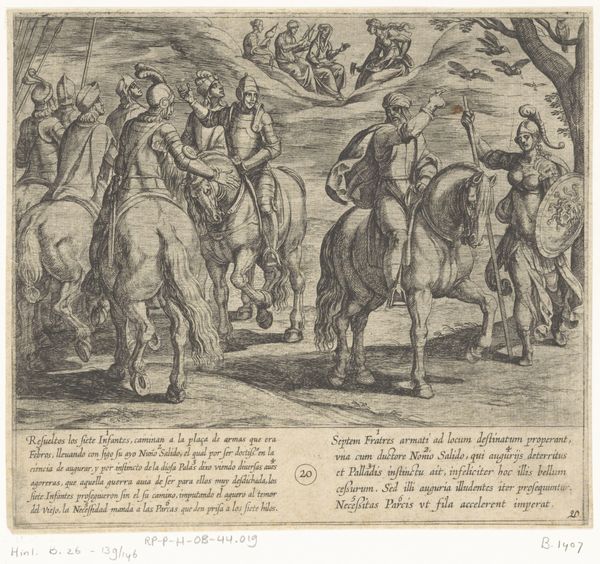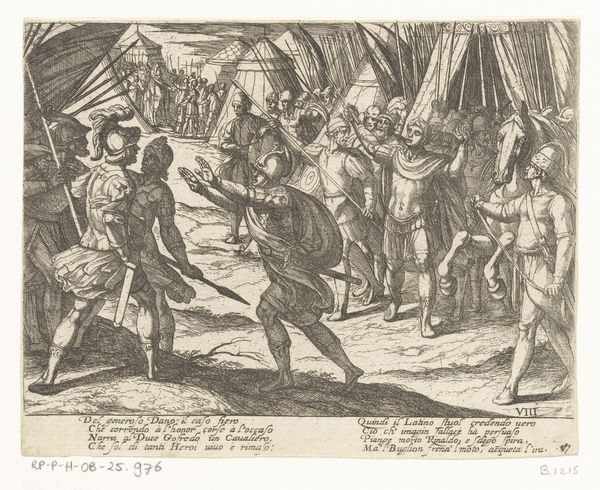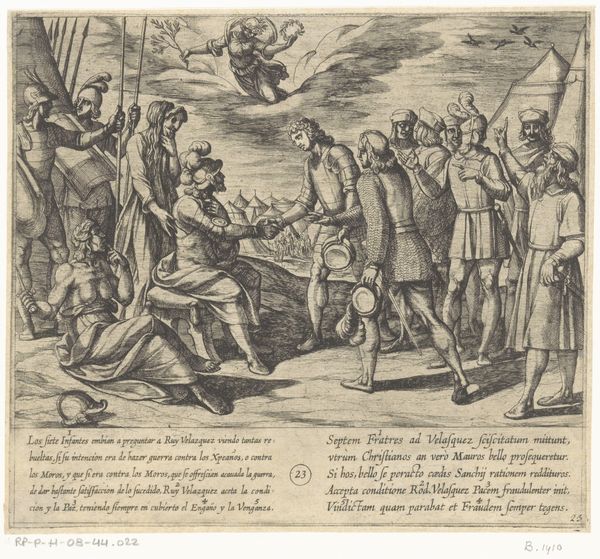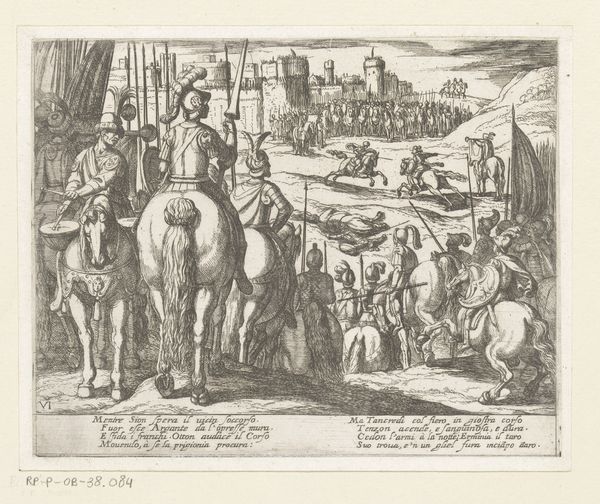
drawing, print, etching, paper, engraving
#
drawing
#
medieval
# print
#
etching
#
landscape
#
figuration
#
paper
#
genre-painting
#
history-painting
#
engraving
Dimensions: height 185 mm, width 206 mm
Copyright: Rijks Museum: Open Domain
This print by Antonio Tempesta, created around the late 16th or early 17th century, illustrates a scene of refusal and conflict, laden with symbols of power and betrayal. Note the central gesture: the outstretched arm of Diego González as he pleads. This motif, appearing throughout art history, embodies supplication. Yet here, it is met with the stern figure of Ruy Velazquez, mounted on horseback, a symbol of authority and cold resolve. This interaction reminds us of similar scenes across epochs, from ancient Roman reliefs to Renaissance paintings, where gestures of pleading are juxtaposed with figures of unyielding power. Consider the psychological depth here: Velazquez's refusal is fueled by past personal grievances, revealing how personal vendettas can override broader loyalties. This scene encapsulates the primal human drama of revenge. It stirs subconscious anxieties about the fragility of alliances and the persistence of memory. The symbol of the horse also points to the cyclical progression of visual symbols. The horse has been passed down through history shifting in meaning, initially representing triumph and power, and evolving to signify more complex, nuanced attributes of the human condition.
Comments
No comments
Be the first to comment and join the conversation on the ultimate creative platform.
